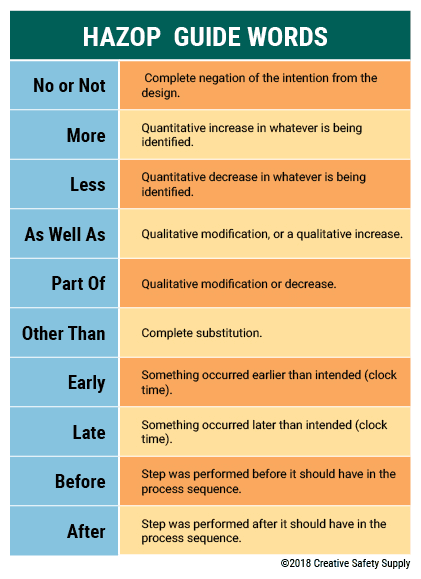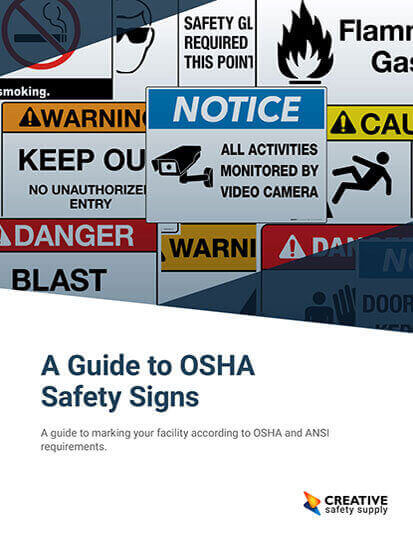
What is a Hazard and Operability (HAZOP) Study?
Proactive management of potential safety hazards in processes, equipment, and facilities is essential to reduce incidents and create a safer work environment. That is why regulatory agencies like the OSHA (Occupational Safety and Health Administration) require a systematic risk assessment approach to identify, reduce, and manage workplace hazards. One such risk management technique is the Hazard and Operability study, often called HAZOP.
HAZOP systematically examines a process or operation to identify potential risks by looking for deviations from the intended design or operation. It essentially focuses on what could go wrong at a detailed level rather than starting with broad categories.
When HAZOP is performed properly in businesses such as refining, chemical industries, oil or gas, pharmaceutical, power generation, and other similar places, the identified hazards are sure to be remedied to prevent injuries, fatalities, and damage to equipment. HAZOP can be a valuable tool for employers when thinking about improving workplace safety.
Relation Between HAZOP and PHA
Process Hazard Analysis (PHA) is a thorough and systematic assessment of the potential hazards associated with an industrial process. Different methods including “bowtie” analysis, Fault Tree Analysis (FTA), Failure Mode and Effect Analysis (FMEA), Hazard and Operability studies (HAZOPs), and “What If” analyses are used to conduct PHA analysis. Thus, HAZOP is one of the techniques to perform PHA.
Guide Words
Each guide word has a set meaning when applied to different nodes or variations of the plan. The following is a common set of guide words used in many industries:

- No or Not - The complete negation of the intention from the design
- More - There is a quantitative increase in whatever is being identified
- Less - There is a quantitative decrease in whatever is being identified
- As Well As - There is a qualitative modification, or a qualitative increase
- Part Of - There is a qualitative modification or decrease
- Other Than - There was a complete substitution
- Early - Something occurred earlier than intended (clock time)
- Late - Something occurred later than intended (clock time)
- Before - A step was performed before it should have in the process sequence
- After - A step was performed after it should have in the process sequence
Where Guide Words Are Used
Utilizing guide words is an important step within the four phases of a HAZOP initiative for risk management. They are used to describe almost any type of parameter in a process or procedure. Some common parameters that are looked at include flow, pressure, temperature, level, time, reaction, start-up, shutdown, draining, maintenance, etc.
In fact, utilizing guide words is one of HAZOP’s defining features since they aim to pick apart every single process and the potential outcomes if something goes wrong. Other continuous improvement and risk assessment programs find a problem and fix them right there rather than predicting issues like HAZOP does.
Overview of HAZOP Analysis Process
HAZOP is a systematic approach to identifying potential safety hazards and operability problems in complex systems and processes. The following key steps are involved in creating and implementing a Hazard and Operability analysis.
Define the Purpose and Scope of the HAZOP Study
HAZOP analysis starts with defining the purpose and scope of the study. This involves identifying the process to be studied alongside the team members involved, and any key assumptions or constraints of the study.
Assemble a HAZOP Team
The operability of the HAZOP method requires a team of experts in areas such as operations, maintenance, instrumentation, engineering, process design, etc. The ideal team size entirely depends on the process or procedure being evaluated but should be kept as small as possible without sacrificing the necessary talent or knowledge. The most common roles for this team are:
-
Study Leader - This person leads the study and should have experience with HAZOP studies already.
-
Recorder / Scribe - This person documents everything about the study including causes, consequences, actions, deviations, and more.
-
Process Designer - This person provides details about the intent of designs.
-
Operator - This person will operate the process.
-
Specialist - This person provides specialized technological knowledge about the process.
-
Maintainer - This person offers information and details about the maintenance of equipment or other machinery.
Breakdown the System or Process into Nodes
Once a process or system is selected for HAZOP study, it is important to break it down into smaller units called notes. Each node represents a specific point in the project under study, such as equipment, a control system, or an operating procedure, where potential hazards or operability issues can arise.
Identify the Process Parameters
The HAZOP team identifies process parameters for each node based on the scope and objectives of the study. These parameters can be physical properties such as temperature, pressure, level, or composition, or a functional property, such as current, frequency, or speed.
Apply the Guide Words
In this stage, the HAZOP team selects guide words for each parameter of each node, using a standard and systematic approach. These guide words are used to identify potential deviations from the intended design or operation of the system or process under study. Some common guide words used in HAZOP analyses are: no or not, more, less, as well as, part of, other than, early, late, before, and after.
Consider Consequences, Causes, and Safeguards
The HAZOP team considers the causes, consequences, and safeguards for each deviation identified in the earlier stage.
The consequences can include harm to workers, damage to equipment or enviroment, or loss of efficiency or productivity. Causes can include faulty equipment, human errors, hazardous chemicals, or external factors, such as power outages or unfavorable weather conditions.
Safeguards can include both preventive and mitigative techniques including engineering controls, alarms, safety procedures, or training.
Document the HAZOP Study Findings
The HAZOP team prepares a detailed report to record the study findings. This document records the process studied, the nodes, parameters, guide words, deviations, evaluations, and recommendations for mitigating or eliminating the safety hazards and operability problems.
Review and Implement the Recommendations
The results of the Hazard and Operability analysis are reviewed with the relevant stakeholders to verify the findings. After verification, the recommendations are implemented to improve the safety and efficiency of the system or process.
The HAZOP study process may be repeated periodically to ensure any changes or updates to the system or process are properly analyzed to prevent hazards and operability problems.
Phases in Hazard and Operability (HAZOP) Study
HAZOP study requires a multidisciplinary team that conducts the systematic analysis of a system or process in four different phases including:
Definition Phase:
The definition phase of HAZOP analysis typically begins with the identification of members for a multi-disciplinary risk assessment team. The risk assessment team should identify the HAZOP study scope to focus efforts in the right direction and clearly define their responsibilities throughout the analysis. The scope of the risk assessment project should include study boundaries, key interfaces, and assumptions.
Preparation Phase:
This phase involves identifying and locating supporting data and information to plan the study. The HAZOF team needs to prepare the schedule, timelines, and template format for recording the Hazard and Operability analysis outputs.
Examination Phase:
The examination phase begins with breaking down the process or complex system under study into small steps or parts. The team should use HAZOP guide words to identify potential areas of deviation from the intent and identify consequences and causes of problems. Moreover, the significance of each problem should be analyzed along with identification and mitigation mechanisms for each issue.
Documentation and Follow-up Phase
The documentation of the HAZOP study is often facilitated by using a template found in the IEC 61882 Standard. The team may modify the template based on their needs and record the identified deviations, consequences, causes, and recommended actions in the modified format.
Follow-up activities, such as implementing the suggested actions or re-studying elements of the process in case of any changes or updates, are facilitated by the HAZOP study report or document.
Advantages and Disadvantages to of Using HAZOP
HAZOP is an invaluable tool when it comes to hazard analysis. In fact, there are several advantages that it holds unique to itself. The first one is its helpfulness when facing hazards that are difficult to measure, such as ones rooted in human behaviors and ones that are difficult to detect. The reason being because HAZOP doesn’t directly ask the risk management team to measure this kind of deviation from what is normal. Instead, they are required to use guide words that give them the ability to predict hazards before they occur.
HAZOP also has a built-in brainstorming method that helps with those hazard predictions. It relies on this aspect heavily. Lastly, HAZOP is a systematic and comprehensive method that is much simpler to use than other traditional risk assessment methods.
As for disadvantages, HAZOP does not have the ability to assess hazards regarding the interaction of different processes within systems. There is also no prioritization strategy that comes with Hazard and Operability analysis. And lasty, there is no way that the users can assess the effectiveness of new or already existing controls.
With all that in mind, HAZOP is only one of the numerous methods that a company can use to find and solve hazardous situations within the workplace. It is also good to keep in mind that many of these types of methods can be used in tandem with each other to provide a more overreaching hand in keeping employees, equipment, and quality of product safe and efficient.
Similar Articles
- Job Hazard Analysis: Addressing Coronavirus Risk in Your Workplace
- Fault Tree Analysis
- Bottleneck Analysis
- Job Safety Analysis
- The Five Whys (Root Cause Analysis)
- What is HAZCOM? (Hazard Communication Definition + OSHA Standards)
- Understanding Risk Assessments in the Workplace
- Value Stream Mapping (VSM Analysis)
- Kano Model (Analysis & Diagram)
- Hierarchy of Controls [Hazard Exposure + Prevention]

